Counting Primary Cells
-
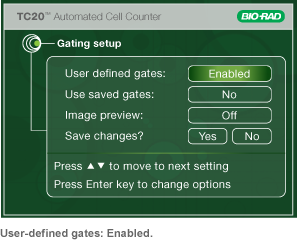
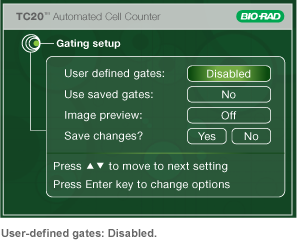
The TC20 automated cell counter has two counting modes. Depending on the sample type, the user-defined gates can be either enabled or disabled.
-
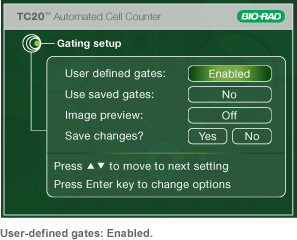
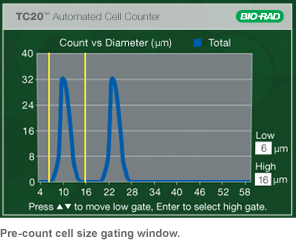
Samples with Multiple Cell Populations (stem cells and other primary cells)
User-defined gates must be enabled. Once the user-defined gates are enabled, a histogram will be displayed at the beginning of each count and the user can select the population of interest by adjusting the position of the cell size gates. Only objects within the designated range will be analyzed as cells; those with diameters outside of the size range will be excluded from the cell count.
-
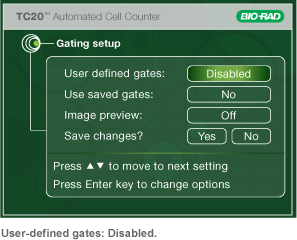
Samples with Multiple Cell Populations (stem cells and other primary cells)
If the user-defined gates are disabled, the cell counting algorithm will automatically determine the population to count without any user input. The algorithm will count the cells of the most predominant cell type that typically makes up the largest peak, and this may not be the population the user wants to count.
-
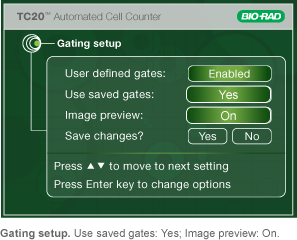
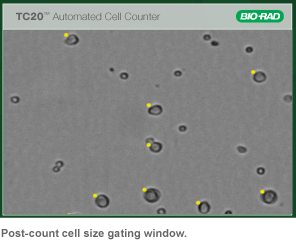
To make counting of samples with multiple cell populations easier, when counting sample replicates, the TC20 cell counter can save the positions of gates and apply them to subsequent counts (choose Yes in the “Use saved gates” field in Gating setup).
If “Image preview” is On, an image of cells will be displayed during gating. In the image, only cells with diameters between the selected size gates will be marked with a yellow dot.
-
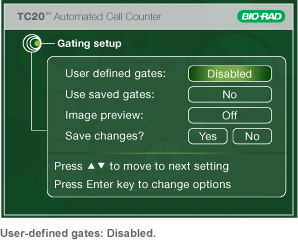
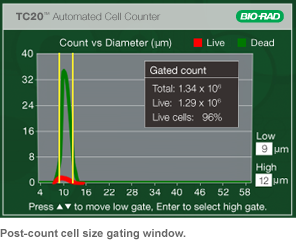
Immortal Cell Lines
When counting immortal cell lines or other samples that are composed of cells with similar cell size, the user-defined gates should be disabled. The cell counting algorithm then automatically identifies the cell population of interest without requiring user input. A histogram of cell size distribution can be accessed once the count is completed.